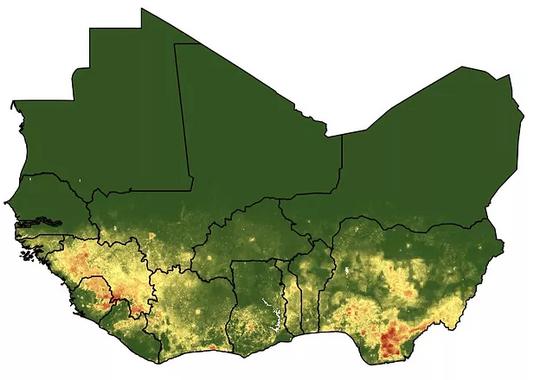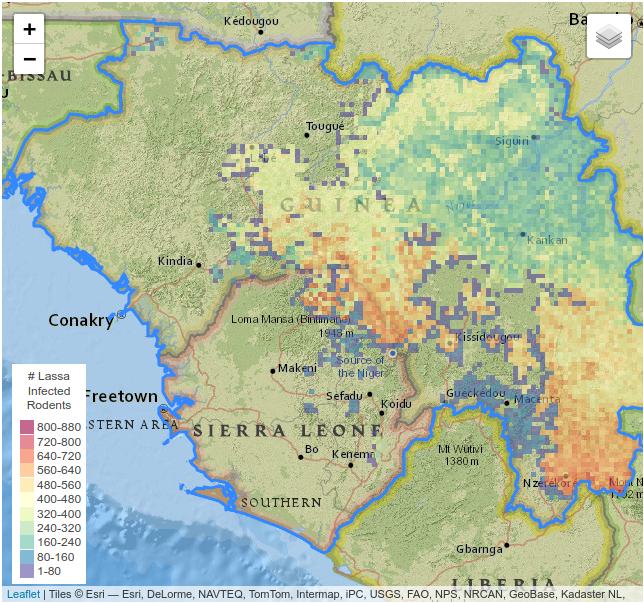Projects
Database development
Forecasting the risk of spillover for a zoonotic pathogen requires data to train models. Because of this, we are taking steps to organize data that documents the occurrence, prevalence, genomic diversity, etc, for zoonotic pathogens. To this end, we’ve developed an interactive database that allows a user to view the available data on Lassa virus, an important zoonotic pathogen spread by rodents in West Africa.


Forecasting and spillover emergence
As contact between human and wild animal reservoir populations increases, so to does the risk that infectious diseases will spillover and emerge into the human population. We are developing tools that forecast the risk of Lassa virus spillover from its natural reservoir, Mastomys natalensis, across West Africa. To view past and future risk of Lassa virus spillover visualized across West Africa click on the button below.
Intervention Forecasting
Intervention strategies like wildlife vaccination or population management could reduce the transmission of animal-borne pathogens from wildlife to humans. However, these measures require substantial logistical planning to optimize their benefit. To this end, we are developing tools that simulate the effect of different kinds of interventions for rodents that carry Lassa virus in West Africa.


Neural networks for finescale spillover risk prediction
Climatic and land cover GIS datasets are valuable for predicting spillover risk of pathogens like Lassa virus. However, GIS datasets are often too coarse to allow fine-scale assessment of risk at, for example, the level of an individual town. This is unfortunate because fine-scale features such as housing style likely affect the extent to which humans interact with wildlife reservoirs like rodents –and as a consequence — the extent to which wildlife-borne diseases are transmitted to humans. As part of ongoing work, we are designing machine vision algorithms that will predict spillover risk directly from aerial imagery.
